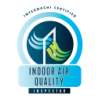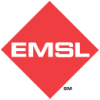GLOSSARY OF COMMON MOLDS IN CANADA
|
|
OUR TRUSTED PARTNERS
|
360 Mold Services performs mold inspections and indoor air quality testing throughout Kitchener, Waterloo, Cambridge, Guelph, Brantford and London. We also provide radon testing, asbestos testing and infrared (IR) thermal imaging services.
|
SERVICES |
RESOURCES |
Mold Inspections | Indoor Air Quality Testing | Asbestos Testing | Marijuana Grow Ops Inspections | Infrared (IR) Thermal Imaging | Ajax | Aurora | Barrie | Brampton | Brantford | Burlington | Caledon | Cambridge | Collingwood | Erin | Fort Erie | Guelph | Halton Hills | Hamilton | Ingersoll | Innisfil | Kitchener | London | Markham | Milton | Mississauga | Muskoka | Newmarket | Niagara Falls | Norfolk County | Oakville | Orangeville | Orillia | Oshawa | Owen Sound | Peterborough | Pickering | Port Severn | Richmond Hill | Shelburne |
St. Catherines | St. Thomas | Stratford | Tillsonburg | Thorold | Toronto | Vaughan | Wasaga Beach | Waterloo | Whitby | Woodstock
St. Catherines | St. Thomas | Stratford | Tillsonburg | Thorold | Toronto | Vaughan | Wasaga Beach | Waterloo | Whitby | Woodstock














